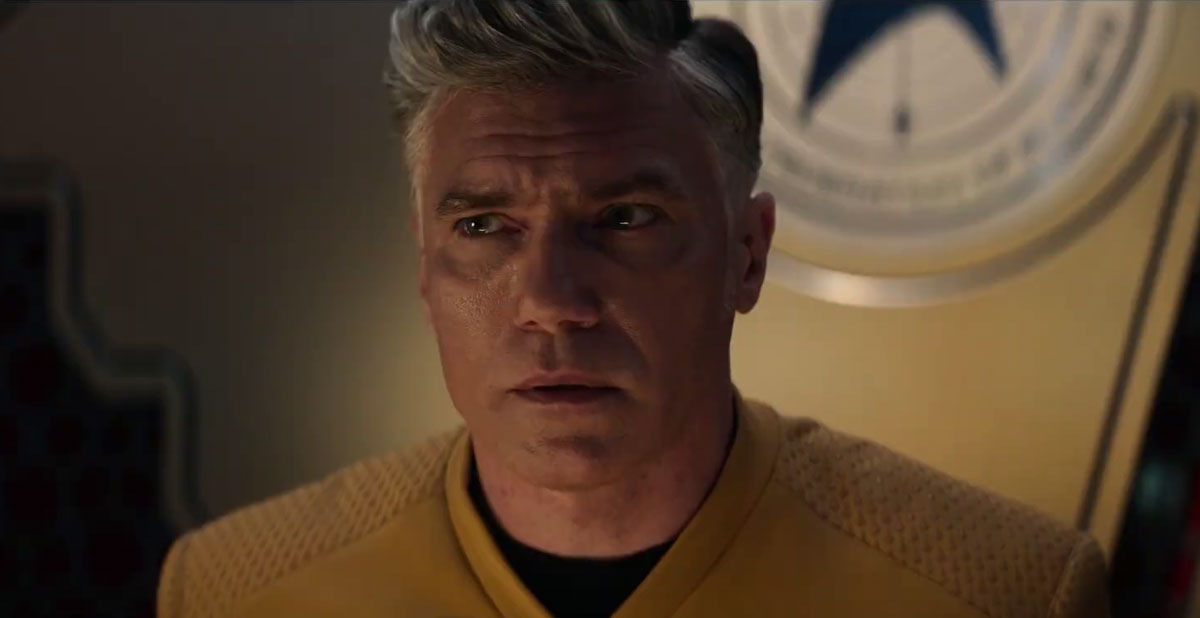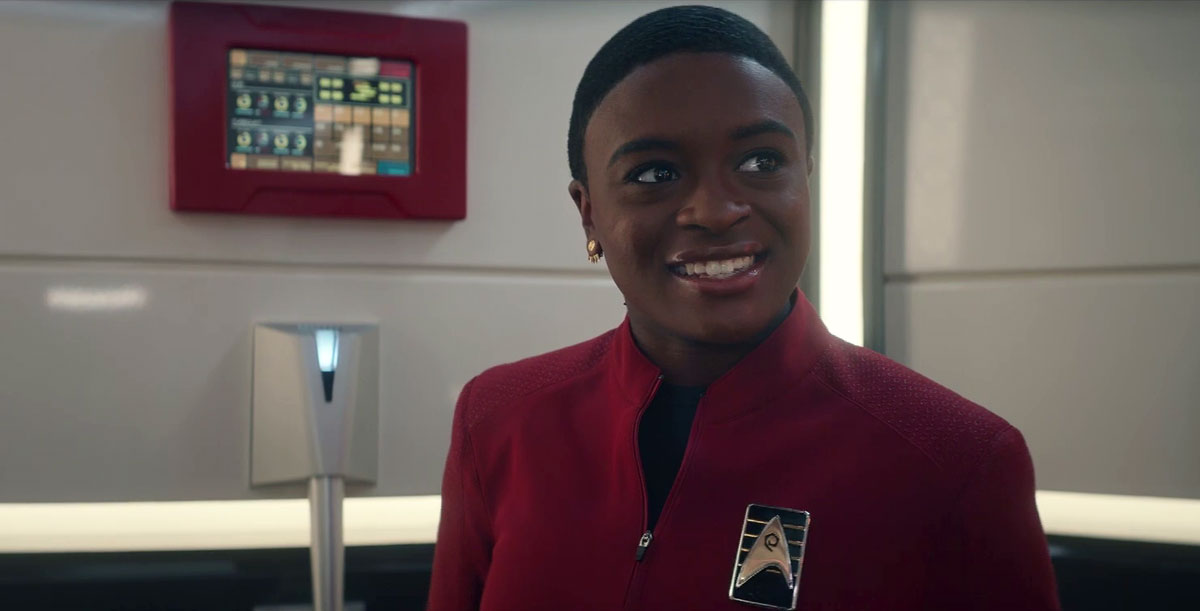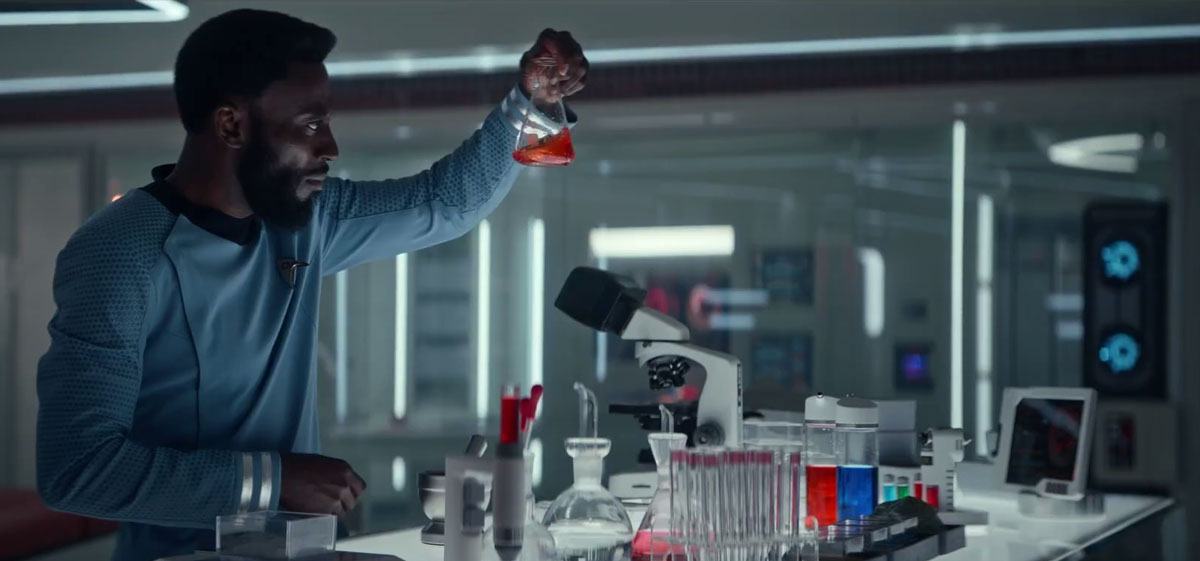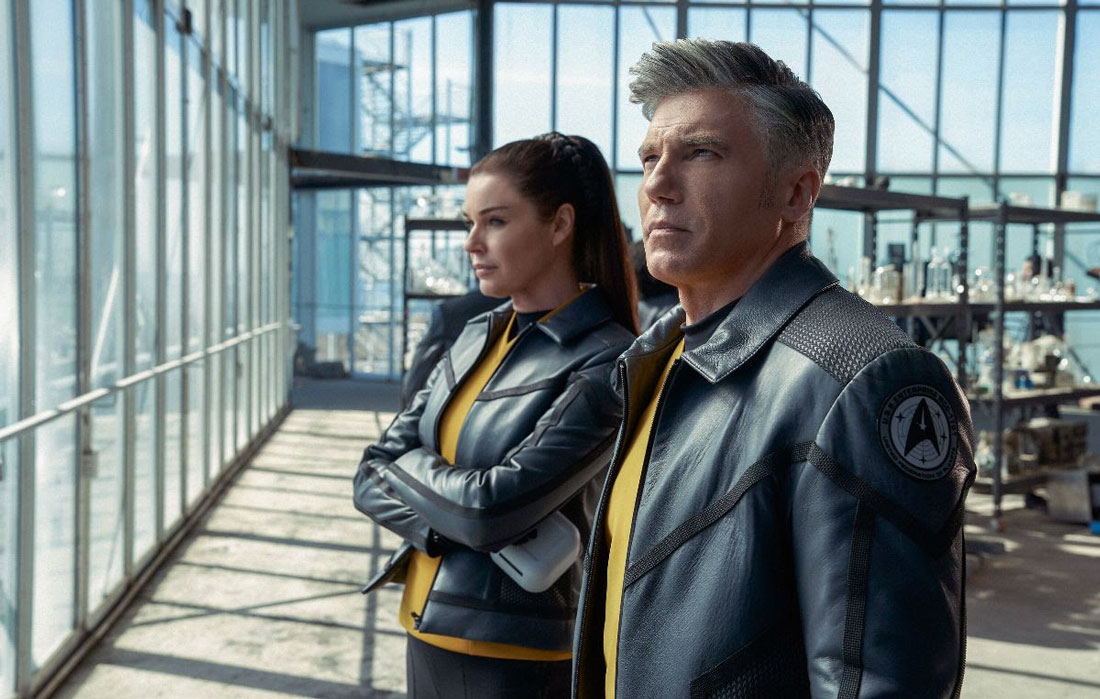Expectations for Star Trek: Strange New Worlds, the latest entry into the ever-expanding Star Trek Universe, are not just high, but also personal — after all, it was the fans who shouted MORE, PLEASE! after Star Trek: Discovery brought the pre-Captain Kirk Enterprise crew into the modern era.
There was just something special about the three 1960s-era characters. Captain Pike and all-business first officer Number One — seen in action only in the discarded 1964 Original Series pilot “The Cage” (with footage reused in “The Menagerie”) — and a young version of half-Vulcan Spock, whom we know better than any other Trek character.
It seemed obvious to fans that there was more story to tell here, more boundaries to push, and quite simply more time needed with the extremely-likable trio; the sheer charisma of these actors was nearly enough to will the show into existence all by themselves.
I’ve had the opportunity to watch the first five episodes of Strange New Worlds’ 10-episode season, and not only is that charisma still burning brightly, but these characters turn out to be the catalyst for a production that transcends any one character — and any one genre of Star Trek.

Debuting May 5 on Paramount+ and CTV Sci Fi Channel in Canada, Strange New Worlds’ modernness shines through, of course, in things like the set designs, costumes, and visual effects, but also within the narratives of the characters themselves —who they are and what they are challenged by feeling particularly “of the moment” to our own current era. But while the show is clearly of 2022, it simultaneously feels particularly classic to the original spirit of Star Trek.
Yes, this is a relatively episodic series, with “emotional serialization” as the creative team has helpfully phrased, but the way it most resembles the Original Series is the way it uses its science fiction lens to directly relate to the issues affecting its audience. This show understands the responsibility it has in carrying on the legacy of Star Trek in that respect and and these early episodes set the tone for that, in some refreshing and bold ways.
Beyond all that, however, Strange New Worlds is quite simply fun. Even while events may flow from ship-in-danger high-stakes action to smaller, low-stakes comedic moments, the Enterprise characters are allowed to experience a full range of emotions — even Spock, in his Vulcan capacity for such things — and the result is a fully immersive and entertaining experience, regardless of scenario.
The standalone format has also gives the scientific and philosophical ideas associated with each adventure a chance to percolate in the show (and in my mind!) for just the right amount of time, without growing stale.

Even with the episodic nature of the show, it appears there will be plenty of room for our characters to grow and change, as it brings us back to the legendary starship about half a year or so after our last extended visit to the Enterprise in “Such Sweet Sorrow, Part 2.”
These first outings have set up some very interesting storytelling prospects for the Enterprise crew — both cheerful and foreboding — with perhaps the darkest being Christopher Pike (Anson Mount) trying to grapple with the dark vision of the future (thrust upon him in “Through the Valley of Shadows”), a heavy weight on the good captain’s mind as the series begin.
This man is still gentle and inspiring, a man who’s unique brand of non-toxic, rugged masculinity is only more deeply enhanced by his knowledge of his own future. The question of how this knowledge will effect his choices as a leader is a complicated one, and it goes to some interesting places in these episodes. Anson Mount has said that “Pike’s superpower is empathy,” which causes him to be a deep thinker — one I would follow anywhere — and a ferocious defender of the people under his command, and to those they are called upon to help.
Una Chin-Riley’s (Rebecca Romijn) entire aesthetic in Strange New Worlds acts as a tribute to the history of her character; “Number One” owns her hyper-competence — and her stoicism — while flashing her femininity unabashedly. Her look is big, bold, and glamorous. The writers have also imbued Una with layers beyond her best-in-Starfleet professionalism; a revelation from the season’s third episode has the potential to test Una in ways that could take her way outside of her comfort zone.

On the lighter side of things — while no one gets trapped in a turbolift like in “Q & A” — the feel of the Una-Spock pairing from that Short Trek tale is replicated across varying stories.
This approach allows us to spend a little bit of time with everyone, sometimes in match-ups I didn’t expect — like the unsure-but-talented young cadet Uhura (Celia Rose Gooding) seeking some engineering tutoring from wise Aenar chief Hemmer (Bruce Horak), bold and fun-loving Nurse Chapel (Jess Bush) and effortlessly-cool navigator Ortegas (Melissa Navia) poking fun at each others’ past shore-leave mishaps, and rough-edged security chief La’an (Christina Chong) spending off-duty time with friend and mentor Una trying to shake off their stuffy, no-fun-allowed reputations.
As one might expect from the current keepers of the Star Trek kingdom, Strange New Worlds also takes advantage of its placement within the timeline, as other characters from the Kirk era find their way into the show in supporting roles which serve the character development of our main cast, like T’Pring (Gia Sandhu), betrothed to Spock (Ethan Peck).

But perhaps the biggest surprise is Babs Olosanmokun’s portrayal of Dr. M’Benga, a gentle and sweet man who will do anything for his patients — as his backstory is both thought-provoking and full of unexpected desperation, which opens up a lot of possibilities for the good doctor’s future.
As for the starship itself, the updated Enterprise sets are just the right mix of retro-sexy and modern sparseness. There is a certain deliberateness to how the sets are dressed and utilized that fully embraces the Enterprise as both a character unto herself and as a mirror reflecting the people who inhabit her.
This can be seen in the crew quarters in particular, ranging from Number One’s orderly decor to Captain Pike’s warm and inviting home aboard ship. Other standouts include the new engineering set, functional and industrial as one would hope, but made even more immersive through use of the often-utilized AR wall technology to really bring the massive power plant to life.
The Enterprise bridge set, as we’ve mentioned in previous articles, has been slightly modified from its short appearance in Discovery Season 2; its sleek curves and yummy candy-colored console buttons — combined with the modern production technologies afforded to the Strange New Worlds production design team — makes it a command deck worthy of a leader with the luscious hair of Captain Christopher Pike.
(And boy, the first time the ship goes to red alert? Hot stuff.)

Returning to a focus on exploration, boldly going, and all of those traditional Star Trek aims, Strange New Worlds does just what it says on the tin. Creating a whole new alien civilization almost every week is a daunting undertaking, but the series runs head-on into that challenge, using the AR wall in a way that feels a bit better-integrated than as seen in Discovery’s fourth season — the digital team at Pixomondo is clearly developing their talent with the technology as time goes by and that’s starting to show on screen.
But beyond alien landscapes, the series seems willing to try new things with costuming, alien designs (including the return of a Berman-era favorite species in a minor role), and most impressively so far, starship action — there’s a particularly juicy space battle that really showcases the possibilities and skills of the visual effects team, and I hope to see this getting pushed even further as we get deeper into the series.
Strange New Worlds has an episode for everyone, and the great thing about the episodic approach is that if this week didn’t strike your fancy, a whole new adventure is on deck for the next outing. What is consistent, however, is the quality of the characters, the thought-provoking ideas, and the absolute embracement of the Star Trek legacy.

And speaking of episodes, here are the first five episode titles of Strange New Worlds’ ten-episode season, running through the month of May.
-
- May 5: “Strange New Worlds” (101)
- May 12: “Children of the Comet” (102)
- May 19: “Ghosts of Illyria” (103)
- May 26: “Memento Mori” (104)
- June 2: “Spock Amok” (105)
For those of you outside the regions where Strange New Worlds is set to debut this week — and we know there are a lot of you clamoring to know when you’ll be able to see this show! — we spoke to Trek franchise boss Alex Kurtzman at April 30’s premiere event about that very topic.
https://www.youtube.com/watch?v=Q6M1HvCuN6c
Do you want to watch smart people work together to solve a problem in for an hour every week? Me too! For those who have really been clamoring for a return to form, Star Trek: Strange New Worlds is the show you’ve been waiting for.
Jenn Tifft is the co-host of the SnapTrek Podcast
When she’s not aligning EPS conduits, she can be found on Twitter.
![]()
Star Trek: Strange New Worlds debuts on Thursday, May 5 on Paramount+ in the United States, Australia, Latin America, and the Nordics, as well as on CTV Sci Fi Channel in Canada; the series will debut June 22 in the UK and Ireland when Paramount+ launches in those countries.
Additional international distribution has not yet been announced.
